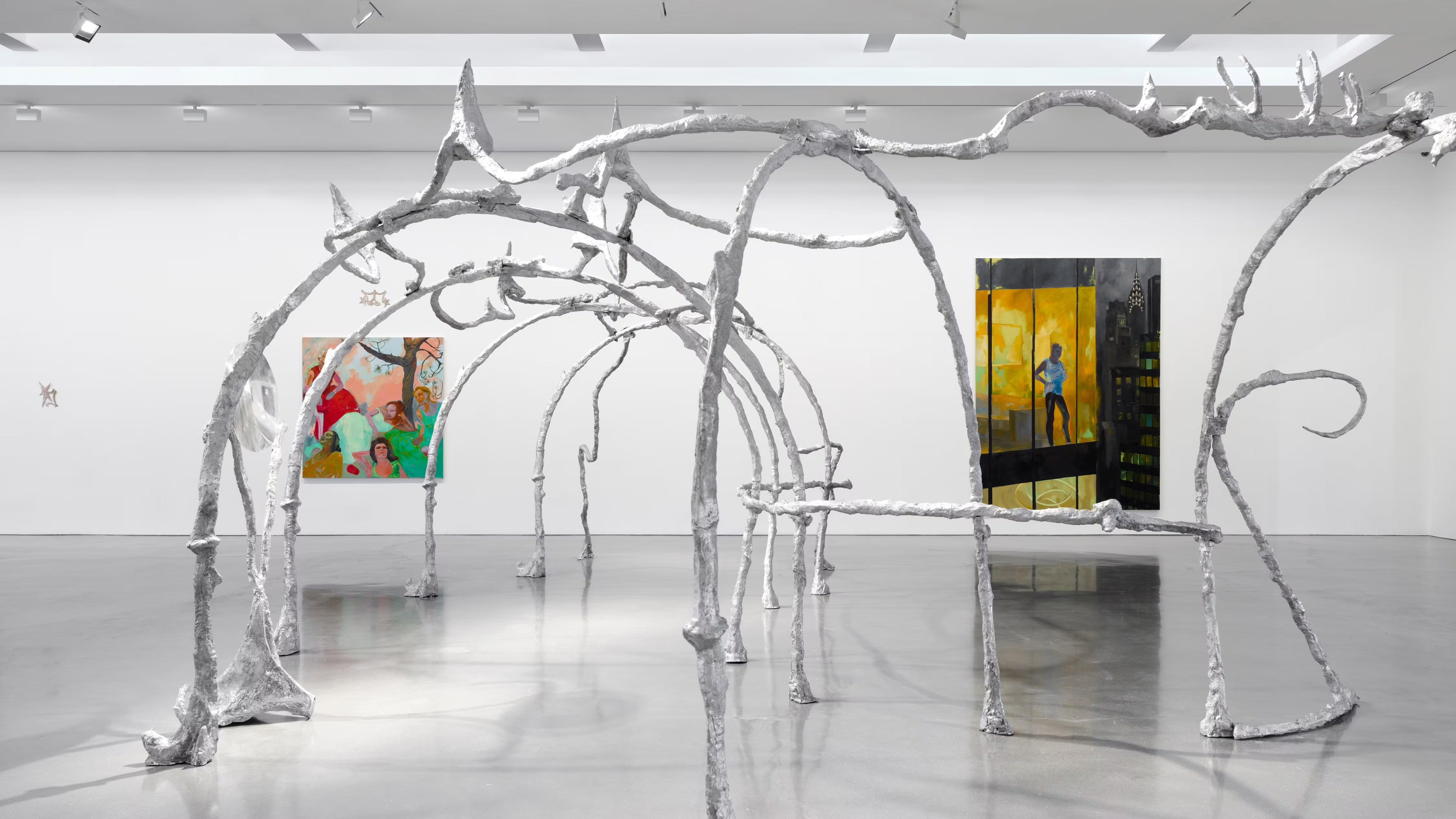
In Sedrick Chisom’s universe, the apocalypse is upon us, disease has spread worldwide, and mutated, monstrous others serve as the backdrop to cutting symbols of Western expansion. Layers of sealed-in oil paint, scraped down and dripping, convey crepuscular, barren landscapes of impotent violence, solitude. His titles run long and jarring, if somehow still playful: George The Younger, The Lord of The Equestrian Short Kings, Trotted Around on a Stolen Blighted Cavalryman’s Horse, Worked To the Bone During Miasmic asscrack Hours, 2022. Themes that recur throughout his work range from a massacre at a fictional “Capitol Citadel,” to a certain distant and surly General Robert E. Lee, to Confederate flags, to Medusa.

A Philly native and New York City transplant, Chisom, 35, is wiry and animated, with a wealth of musings and insights and riffs. Today he’s in the back of a pub near Victoria Stadium in London, where he’s been exiling the past two months in preparation for his exhibition at Pilar Corrias that runs through the end of the year. I came to our conversation convinced that his work, most recently as seen in this past summer’s show at Clearing New York, “...And 108 Prayers of Evil,” came directly out of, or was at least a reaction to, the Covid pandemic. I’m unsettled to learn that this mythical world he’s built predates that chaotic year by an election cycle. His three-act play, 2200—first conceived in 2017 as his thesis at Rutgers—describes a future time when people of color have fled earth, and a mysterious disease, “revitiligo,” which darkens skin pigmentation, has spread terror amongst “wypipo” (white people) worldwide. He was watching Shin Godzilla, 2016, and the Japanese anime shows Attack on Titan, 2013–2023, and Neon Genesis Evangelion, 1995, cultivating his apocalyptic vision and palette when the world shut down. Chisom identifies with creatures like Medusa and the otherwise pariah-ed outcasts of Greek and Roman mythology. He sees those outside the purview of Western expansion as scapegoats for fears, a throughline in America’s fraught past. His upbringing in Northeast and West Philly seems connected to this. “I remember,” he says, “it was in the Northeast, there was this old naked dude, he had pubic hair down to his knees, open bathrobe. It was early in the morning, I had to give him his mail, I threw that shit so far! I was not getting close.”

Chisom’s paintings have that effect, of the thing you can’t look directly at, of freezing you in your tracks. He tells me of one painting from an Edvard Munch exhibition in Massachusetts: “I had this weird feeling that this thing is looking at me as much as I’m looking at it.” The day we speak, Iran launches a major airstrike on Israel, and a hurricane sweeps away a town in North Carolina. I ask how he feels about the state of America, seeking some Whitmanian optimism. “It’s looking like a hot mess,” he says. In the preamble to his play, Earth is referred to as “Side-piece Planet 2453” by the people of color who have fled it to explore the cosmos. “But take Rome, their decline took three times as long as America has even existed,” Chisom offers. “I’ll be back in December.”















.avif)


_result_result.avif)



.avif)

_result_result.avif)

_result_result.avif)
.avif)

_result_result.avif)


_result_result.avif)


.avif)




.webp)

.avif)













%20(1).avif)
.avif)




.avif)








.avif)


.avif)





















.jpeg)

.avif)

_11%20x%2014%20inches%20(2).jpg)







.avif)

.jpg)

%20(1).jpg)
.avif)
.jpg)

.jpg)
.webp)


.webp)



.webp)


.webp)


.avif)












.avif)
.avif)












.avif)



.avif)




















-min_result.avif)









.avif)







3_result.avif)
_result.avif)






_result.avif)




.avif)




.avif)













_result.avif)




%2520(1)_result.avif)
_result.avif)


_result.avif)

_result.avif)



.avif)

.avif)





.avif)














.avif)


_result_result.avif)
















-min_result.avif)






.avif)
.jpg)
















_result.avif)

.avif)


.avif)







.avif)





.avif)

_result.avif)



.avif)









.avif)

















.avif)




.avif)








.avif)

.avif)

.avif)



.avif)


.avif)




.avif)

.avif)

.avif)
.avif)
%20(1).avif)
.jpg)

%20(1).avif)








.avif)
.avif)

.avif)






.avif)


.avif)
.avif)



.avif)
.avif)
%20(1).avif)

.avif)
.avif)

.avif)
.avif)



















.avif)
.avif)
